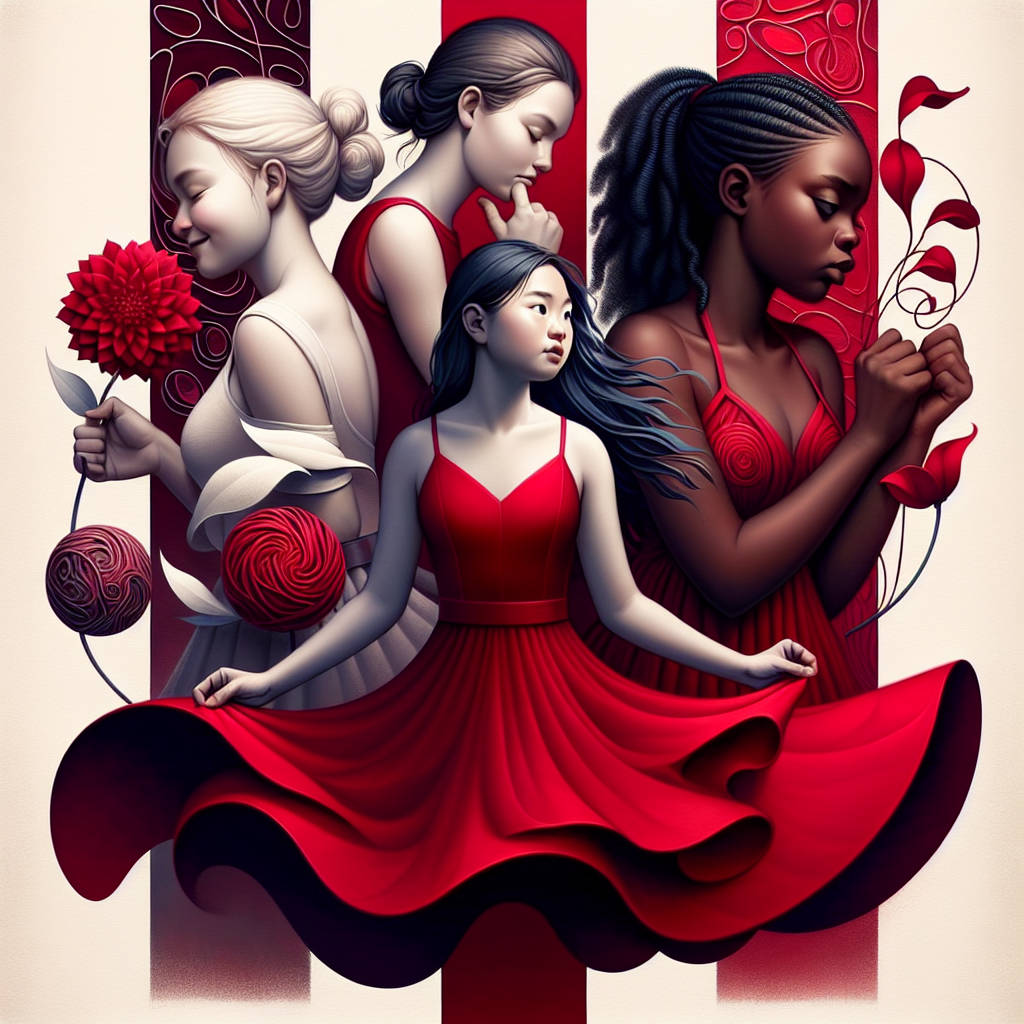A Palette of Emotions: The Meaning Behind Girls in Red Dresses
The visual symbolism associated with girls in red dresses has long captivated artists, filmmakers, and culture enthusiasts. Red is a color that evokes deep emotions, often embodying passion, love, and intensity. Girls depicted in red dresses become powerful symbols that express a spectrum of sentiments and narratives.
The Cultural Significance of the Color Red
Throughout history, red has been a color of significance, often associated with power and celebration. In many cultures, it symbolizes good fortune and joy. For example, in China, red is a prevalent color in festivals and weddings, symbolizing prosperity. In Western cultures, red often conveys strong emotions such as anger, desire, or urgency. The choice of a dress in this striking hue can signify a character’s boldness, confidence, or defiance against societal norms.
Psychological Implications of Red
Psychologically, the color red can trigger strong reactions. Studies indicate that it can increase heart rates and evoke feelings of excitement or aggression. As such, when girls are portrayed in red dresses, it can signify their internal emotional states. For instance, a girl in a vibrant red dress may be depicted as confident and assertive, while a darker shade may imply deeper emotions like longing or sadness.
Symbolism in Literature and Art
Red dresses appear frequently in literature and art, often signifying pivotal themes or character transformations. In fairy tales, such as Little Red Riding Hood, the red garment symbolizes both innocence and a journey into the unknown. This duality highlights the character’s transition from naivety to awareness, often confronting dangers associated with growing up.
Similarly, in contemporary literature and film, red dresses may be worn during key moments that signal a transformation or an awakening. They become visual metaphors for empowerment, marking a character’s journey towards self-discovery.
The Feminine Archetype
Girls in red dresses can also evoke the archetype of femininity. The dress, often seen as a traditional symbol of womanhood, when combined with the color red, can highlight themes of sexuality, femininity, and societal expectations. The portrayal of such figures can mirror societal attitudes towards women, where the red dress becomes an expression of liberation or confinement.
In the cinematic world, red is frequently used to amplify a female character’s presence. Think of iconic films featuring women in red dresses; these outfits often serve to command attention and respect, embodying various interpretations of the female experience—from seduction to strength.
Fashion and Individuality
In fashion, the red dress is timeless and versatile, making bold statements from the red carpet to casual settings. Young women often select this color not just for its aesthetic appeal but as an assertion of individuality and inner strength. A girl in a red dress can signify a break away from the mundane, representing courage to stand out in a world that often encourages conformity.
Impact on Society and Movements
The imagery of girls in red dresses can also resonate within social and political movements. Groups advocating for women’s rights, autonomy, and bold self-expression have adopted red as a significant color for demonstrations and campaigns. The red dress becomes an emblem of solidarity, urging society to recognize and respect the voices of women. By wearing red, participants can challenge stereotypes and create awareness surrounding fundamental issues.
Conclusion
Thus, the meaning of girls in red dresses transcends mere aesthetics. It holds a rich tapestry of cultural, psychological, and social significance, representing power, individuality, and transformation. The emotional palette painted by this vibrant color continues to inspire a wide array of artistic expressions, narrative explorations, and fashion choices. In a world saturated with visual imagery, the red dress remains a potent symbol of the multifaceted nature of femininity and emotional richness. Each portrayal tells a story, inviting viewers to explore deeper meanings and connect with the character on an emotional level. Embracing the color red in dresses allows girls to express their individuality while simultaneously challenging cultural narratives. Such visual expressions encapsulate the fight for autonomy and the celebration of women’s empowerment throughout history.



